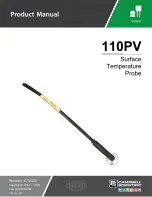
MM4006
M
o
t
i
o
n
Control Tutorial
4.3.1 P I D Servo Loops
The PID term comes from the proportional, integral and derivative gain fac-
tors that are at the basis of the control loop calculation. The common
equation given for it is:
de
K1, • e + K, e d t 4- Kd • d t
where K1) = Proportional gain factor.
= integral gain factor.
K11 = derivative gain factor.
e = instantaneous following error.
The problem for most users is to get a feeling for this formula, specially
when trying to tune the P1D loop. Tuning the PID means changing its three
gain factors to obtain a certain system response, task quite difficult t o
achieve without some understanding of its behavior.
The following paragraphs explain the PID components and their operation.
P Loop
Lets start with the simplest type of closed loop, the P (proportional) loop.
The diagram in Fig. 4.14 shows its configuration.
Motor
Trajectory
Generator
Motion Controller
x K1,
Servo Controller
1.1 D r i v e r
Fig. 4.14 — P Loop.
Encoder •
Every servo cycle, the actual position, as reported by the encoder, is com-
pared to the desired position generated by the trajectory generator. The
difference e is the positioning error (the following error). Amplifying it
(multiplying it by KO generates a control signal that, converted to an ana-
log signal, is sent to the motor driver.
There are a few conclusions that could be drawn from studying this circuit:
• T h e motor control signal, thus the motor voltage, is proportional to the
following error.
• T h e r e must be a following error in order to drive the motor.
• H i g h e r velocities need higher motor voltages and thus higher following
errors.
• A t stop, small errors cannot be corrected if they don't generate enough
voltage for the motor to overcome friction and striction.
• Increasing the Kp gain reduces the necessary following error but too
much of it will generate instabilities and oscillations.
ED1.10181En1020 0 3 / 0 3
4.14
N
e
v
v
p
o
r
t
.
Содержание MM4006
Страница 9: ...F D110181En1020 03 03 b J e w p o r t...
Страница 10: ...Section 1 Introduction 4 4 G G 4 4 4 4 M u d Com 4k 4 66i1W406 i i r i A 0 8 y 0 9 0 0 i 0 0 40 0 4 cv Newport...
Страница 11: ...MM4006 8 Axis Motion Controller Driver evvport...
Страница 41: ...MM4006 Introduction FPI 111181Eli11120 0 1 03 1 3O tNevvport...
Страница 42: ...Section 2 Local Mode C Newport...
Страница 43: ...MM4006 8 Axis Motion Controller Driver C N e w p o r t...
Страница 96: ...Section 3 Remote Mode C klevvport...
Страница 97: ...Newport...
Страница 310: ...Section 4 Motion Control Tutorial Ilevvport...
Страница 311: ...MM4006 8 Axis Motion Controller Driver C EDI10181En 1020 03 03 2 N e V V p O r t...
Страница 313: ...MM4006 8 Axis Motion Controller Driver cv ED110181E01020 03 03 4 2 M e v v p o r t...
Страница 334: ...Section 5 Trajectory Functions Tutorial Newport...
Страница 335: ...MM4006 8 Axis Motion Controller Driver C Newport...
Страница 337: ...MM4006 8 Axis Motion Controller Driver EDH0181En1020 03 03 5 2 N e w p o r t...
Страница 346: ...Section 6 Feature Descriptions Tutorial Newport...
Страница 347: ...MM4006 8 Axis Motion Controller Driver C Nevvport...
Страница 349: ...MM4006 8 Axis Motion Controller Driver ED11018lEn I 020 03 03 6 2 N e v v p O r t...
Страница 359: ...MM4006 F e a t u r e Descriptions Tutorial cv EDI10181En1020 03 03 6 12 N e w p o r t...
Страница 360: ...Section 7 Servo Tuning rano at 1 2 2 p EOF 110 1 0 0 0 0 0 ill fpL4 cv Newport...
Страница 361: ...MM4006 8 Axis Motion Controller Driver C Nevvport...
Страница 363: ...MM4006 8 Axis Motion Controller Driver EDH0181En 1020 03 03 7 2...
Страница 368: ...Section 8 Appendices INevvport...
Страница 369: ...MM4006 8 Axis Motion Controller Driver CkJ Newport...
Страница 371: ...MM4006 8 Axis Motion Controller Driver EDI10181EnI020 03 03 8 2 N e v v p o r t...
Страница 410: ...A7 h7s z c 7...
















































